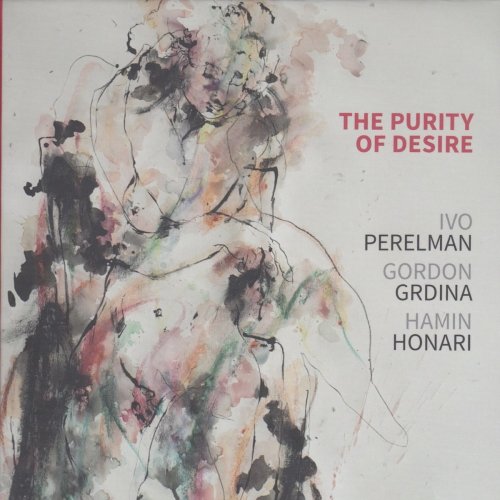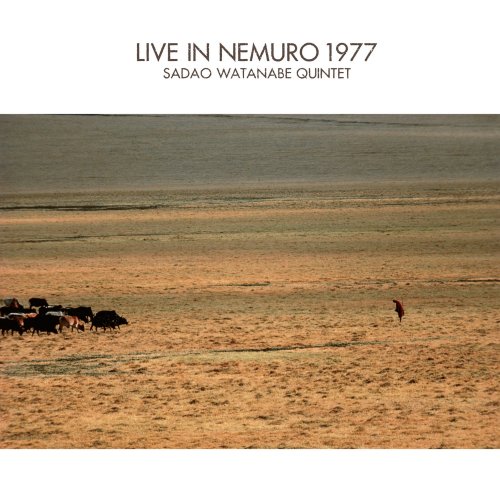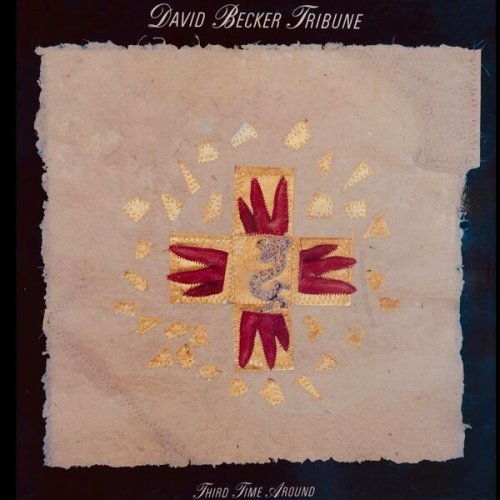Ivo Perelman - The Purity of Desire (2021)

Artist: Ivo Perelman
Title: The Purity of Desire
Year Of Release: 2021
Label: Not Two Records
Genre: Jazz
Quality: FLAC (tracks)
Total Time: 53:38 min
Total Size: 314 MB
WebSite: Album Preview
Tracklist:Title: The Purity of Desire
Year Of Release: 2021
Label: Not Two Records
Genre: Jazz
Quality: FLAC (tracks)
Total Time: 53:38 min
Total Size: 314 MB
WebSite: Album Preview
01. The Purity of Desire
02. Bridge to the Soul
03. Love is a Stranger
04. This Longing
05. A Garden Beyond Paradise
06. Music of a Distant Drum
07. The Joy that Wounds
08. Light upon Light
Ivo Perelman has a life-long passion for the guitar and it was his first instrument before he switched mainly to saxophone. He was a child prodigy on guitar and studied the Isaias Savio classical guitar method. Savio was a great Brazilian/Uruguayan classical guitar pedagogue (Lius Bonfa, Paulo Bellinati being amongst his students) and Perelman studied with a few of his protégés during his teenage years.
Perelman's Brazilian roots remain part of his persona and often his music reflects his upbringing with hints of frevo, axe or choro rhythms as undercurrents. He now has one of the most distinctive voices on saxophone, especially in the altissimo range but remains also a chimera of Brazilian and American music, with his free blowing impulsive streak evolving from his diverse and eclectic musical background. Perelman's technique requires much practice and a delicate but intense embouchure. He has worked with a group of similarly minded improvisers for many years and developed a continuum of evolution through mutual ardent listening and playing. His music continues to develop and seek new challenges.
The challenge in this recording is the interplay between Perelman's sax and the oriental lute or oud of Gordon Grdina. The oud is part of a large family of Turkish and Iraqi instruments and composers include Munir Bashir and Cinuçen Tanrikorur. To add music which has tones redolent of the music's origins, Perelman and Grdina added the daf and tombak skills of Hamin Honari. The daf and tombak are hand-held percussion instruments of Eastern origin.
Honari’s rhythms on the daf include some intrinsic variations of crossing meters. Perelman, meanwhile articulates, overblows and bites his reed at times whilst Grdina plucks and ripples his way to semi-mania. Each individual somehow comes together to form not a fusion but a three-way individualistic effect.
'The Purity of Desire' is a fearsome beast with which to open the recording, a devilish introduction by percussion over which the sax blows a chilling, repetitive storm of raspy sounds. The rhythmic patterns change yet all warp around a seemingly set 2/3 pattern. The finger splitting speed with which Perelman reacts to the intense percussive lines of oud and daf is extraordinary. At one point Perelman resorts to shouting with his sax, each repeated mote rising higher until he is squealing for a reprieve. Excellent to feel a sense of him being pushed ever further, his final held note in the sequence giving way to a descent of such speed it is a wonder the sax did not melt away. The final sax salvo over oud is deeply mesmeric.
' Bridge To The Soul' is dynamic with each individual rising in and out of the ether with refreshing patterns of rhythmic cadences, the oud sounding remarkably violin-like at times. Perelman sets up a swingy notion on the tenor sax in the middle section, which is playfully picked up and deciphered by the others, all the while the percussive intensity is relentless.
' Love is A Stranger' is began with scale ascents from Perelman, a bit of sighed phrasing and then it is filled, padded, melded and pressed by the addition of the other musicians into a pottage of sounds with a distinctive bass line provided by the oud under the sax and daf.
Grdina entices deep , echoing bass notes from his instrument which resonate throughout the piece whilst 'This Longing', introduced by breathy upper altissimo from Perelman, which is well suited to this Eastern infused number, is sweeter. The rhythmic challenges here come from all sides as the changes happen due to profound listening, all centred around the rise and fall of the strings.
'A Garden Beyond Paradise' is completely stand out with its multiplicity of rhythmic patterns, changes and developments. Fervid, and stuffed with textures and patterns which change at the drop of a breath or pluck or scratch. Poetic even, there is a lyrical quality to this track and an undeniable sense of completion.
' Music of A Distant Drum' on the other hand is gentle, infused with Eastern rhythmic atmosphere, even when the sax squeals across the top of the cadence at the start, the beauty of the oud, the scratchy, skin on skin sound of the percussion and the adventurous sax work wonders.
'The Joy That Wounds' is strong and the plangency provided by the tombak, which sounds like it belches forth echoed cannons, provides the atmosphere, which is darker and the sax picks this up, dropping down into guttural, lower register notes at times, whilst rising to the altissimo register at others. Changeable, a different listen each time, this is immense. The middle section positively swings with Perelman speak-squeaking over the top of the resonating percussion and plucked oud.
'Light Upon Light' has just about every meter, change and reaction you can imagine. Adventurous, proudly standing out as one of the major tracks on this recording, the reactions and bouncing off each other from the three musicians inspiring and so natural feeling.
This is one of the best recordings I have heard for a long time and the combination of the oud, sax and tombak is beautiful. Played by three musicians who inspire each other, challenge and push with an adventurous spirit the listener cannot help but be aware of. Perelman actually swings it out at several points, the rhythm so intoxicating it is as if he cannot help himself but it feels improvised, natural and a simple reaction to the deft rhythms.
Honari on the daf plays like a man possessed, his fingers bouncing off the skins like water droplets, whilst the oud is played by some dervish at times, by an angel at others. Perelman sings, sighs, retorts, leads, follows and struts his stuff like the blessed player he is, responding to the two musicians he had the inspiration to bring together for this stellar recording.
It is the intervals, the rhythms and the odd-timed division of labour between the three musicians which make this stand out as a recording, yet they also merge together, particularly on the final track, with a seemingly single-minded sense of what the rhythm now should be.
This provides a journey between musical worlds, between rhythmic identities and sounds of different surfaces, cultures and materials. A blend of ideas, of skin, strings, wood, brass and imagination.
Perelman's Brazilian roots remain part of his persona and often his music reflects his upbringing with hints of frevo, axe or choro rhythms as undercurrents. He now has one of the most distinctive voices on saxophone, especially in the altissimo range but remains also a chimera of Brazilian and American music, with his free blowing impulsive streak evolving from his diverse and eclectic musical background. Perelman's technique requires much practice and a delicate but intense embouchure. He has worked with a group of similarly minded improvisers for many years and developed a continuum of evolution through mutual ardent listening and playing. His music continues to develop and seek new challenges.
The challenge in this recording is the interplay between Perelman's sax and the oriental lute or oud of Gordon Grdina. The oud is part of a large family of Turkish and Iraqi instruments and composers include Munir Bashir and Cinuçen Tanrikorur. To add music which has tones redolent of the music's origins, Perelman and Grdina added the daf and tombak skills of Hamin Honari. The daf and tombak are hand-held percussion instruments of Eastern origin.
Honari’s rhythms on the daf include some intrinsic variations of crossing meters. Perelman, meanwhile articulates, overblows and bites his reed at times whilst Grdina plucks and ripples his way to semi-mania. Each individual somehow comes together to form not a fusion but a three-way individualistic effect.
'The Purity of Desire' is a fearsome beast with which to open the recording, a devilish introduction by percussion over which the sax blows a chilling, repetitive storm of raspy sounds. The rhythmic patterns change yet all warp around a seemingly set 2/3 pattern. The finger splitting speed with which Perelman reacts to the intense percussive lines of oud and daf is extraordinary. At one point Perelman resorts to shouting with his sax, each repeated mote rising higher until he is squealing for a reprieve. Excellent to feel a sense of him being pushed ever further, his final held note in the sequence giving way to a descent of such speed it is a wonder the sax did not melt away. The final sax salvo over oud is deeply mesmeric.
' Bridge To The Soul' is dynamic with each individual rising in and out of the ether with refreshing patterns of rhythmic cadences, the oud sounding remarkably violin-like at times. Perelman sets up a swingy notion on the tenor sax in the middle section, which is playfully picked up and deciphered by the others, all the while the percussive intensity is relentless.
' Love is A Stranger' is began with scale ascents from Perelman, a bit of sighed phrasing and then it is filled, padded, melded and pressed by the addition of the other musicians into a pottage of sounds with a distinctive bass line provided by the oud under the sax and daf.
Grdina entices deep , echoing bass notes from his instrument which resonate throughout the piece whilst 'This Longing', introduced by breathy upper altissimo from Perelman, which is well suited to this Eastern infused number, is sweeter. The rhythmic challenges here come from all sides as the changes happen due to profound listening, all centred around the rise and fall of the strings.
'A Garden Beyond Paradise' is completely stand out with its multiplicity of rhythmic patterns, changes and developments. Fervid, and stuffed with textures and patterns which change at the drop of a breath or pluck or scratch. Poetic even, there is a lyrical quality to this track and an undeniable sense of completion.
' Music of A Distant Drum' on the other hand is gentle, infused with Eastern rhythmic atmosphere, even when the sax squeals across the top of the cadence at the start, the beauty of the oud, the scratchy, skin on skin sound of the percussion and the adventurous sax work wonders.
'The Joy That Wounds' is strong and the plangency provided by the tombak, which sounds like it belches forth echoed cannons, provides the atmosphere, which is darker and the sax picks this up, dropping down into guttural, lower register notes at times, whilst rising to the altissimo register at others. Changeable, a different listen each time, this is immense. The middle section positively swings with Perelman speak-squeaking over the top of the resonating percussion and plucked oud.
'Light Upon Light' has just about every meter, change and reaction you can imagine. Adventurous, proudly standing out as one of the major tracks on this recording, the reactions and bouncing off each other from the three musicians inspiring and so natural feeling.
This is one of the best recordings I have heard for a long time and the combination of the oud, sax and tombak is beautiful. Played by three musicians who inspire each other, challenge and push with an adventurous spirit the listener cannot help but be aware of. Perelman actually swings it out at several points, the rhythm so intoxicating it is as if he cannot help himself but it feels improvised, natural and a simple reaction to the deft rhythms.
Honari on the daf plays like a man possessed, his fingers bouncing off the skins like water droplets, whilst the oud is played by some dervish at times, by an angel at others. Perelman sings, sighs, retorts, leads, follows and struts his stuff like the blessed player he is, responding to the two musicians he had the inspiration to bring together for this stellar recording.
It is the intervals, the rhythms and the odd-timed division of labour between the three musicians which make this stand out as a recording, yet they also merge together, particularly on the final track, with a seemingly single-minded sense of what the rhythm now should be.
This provides a journey between musical worlds, between rhythmic identities and sounds of different surfaces, cultures and materials. A blend of ideas, of skin, strings, wood, brass and imagination.

![The Mood Mosaic - Acid Maestro (Morricone's Cosmic Funk Legacy) (2025) [Hi-Res] The Mood Mosaic - Acid Maestro (Morricone's Cosmic Funk Legacy) (2025) [Hi-Res]](https://www.dibpic.com/uploads/posts/2025-12/1766134708_dkymenaq6pxqa_600.jpg)
![The Mood Mosaic - The Sexploitation (Pulp Grooves From The Mondo Porno Vault) (2025) [Hi-Res] The Mood Mosaic - The Sexploitation (Pulp Grooves From The Mondo Porno Vault) (2025) [Hi-Res]](https://www.dibpic.com/uploads/posts/2025-12/1766131648_uhod8d4qn4msi_600.jpg)




![Tomasz Stanko - Unit (Polish Radio Sessions vol. 2/6) (2025) [Hi-Res] Tomasz Stanko - Unit (Polish Radio Sessions vol. 2/6) (2025) [Hi-Res]](https://www.dibpic.com/uploads/posts/2025-12/1765796826_cover.jpg)
